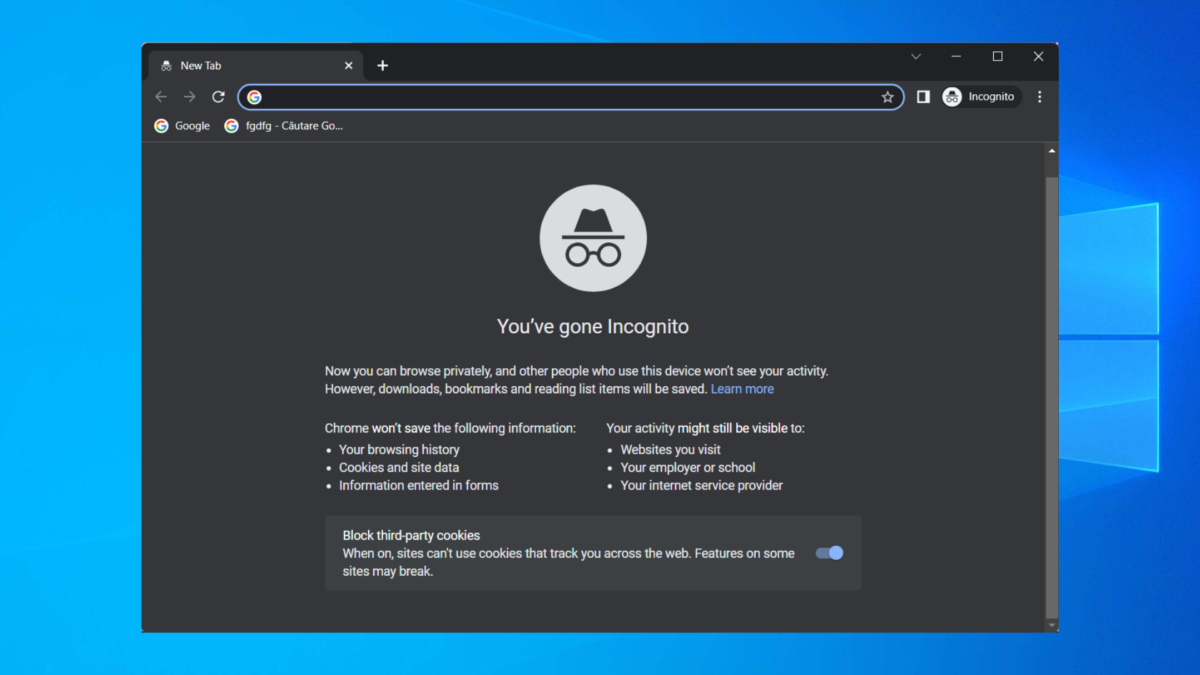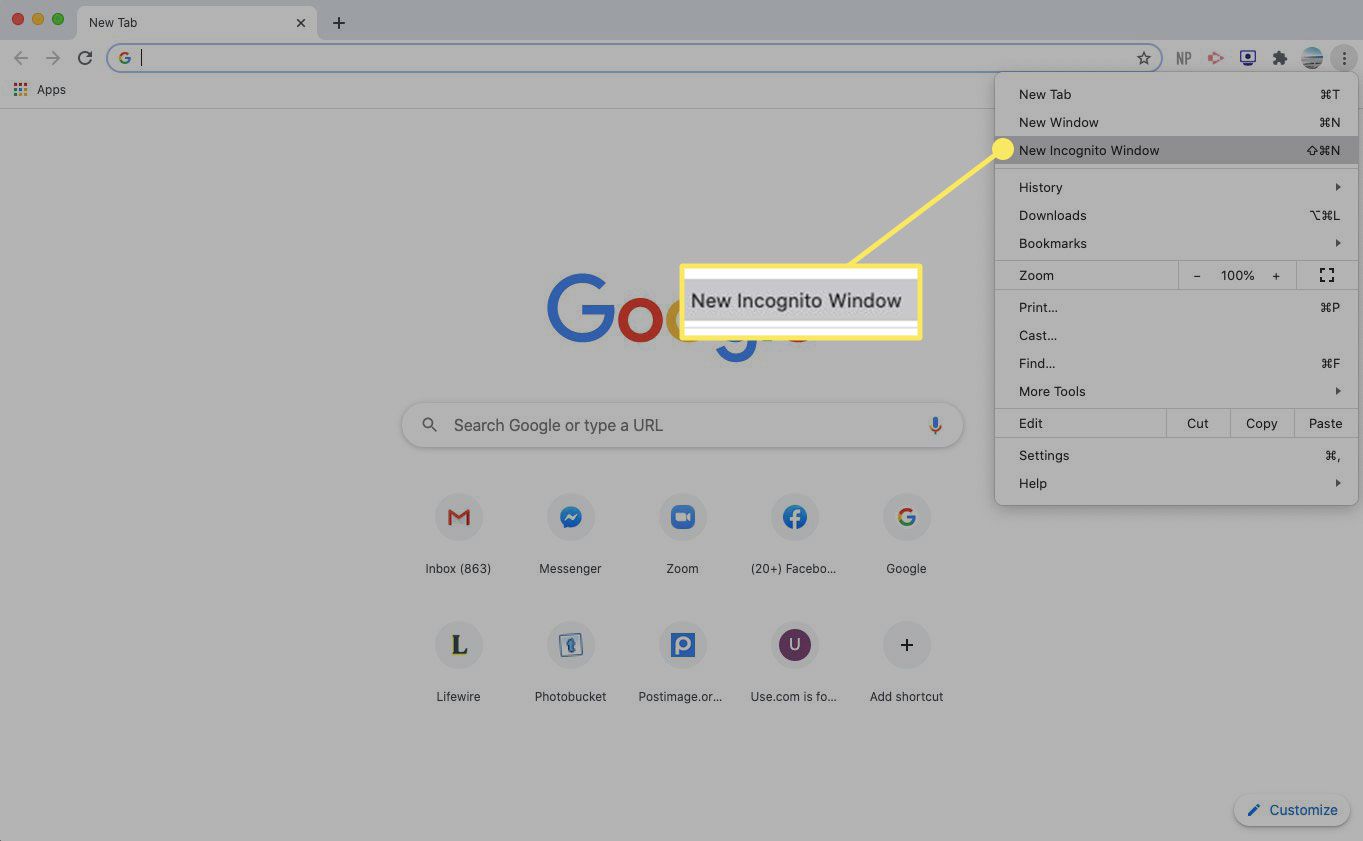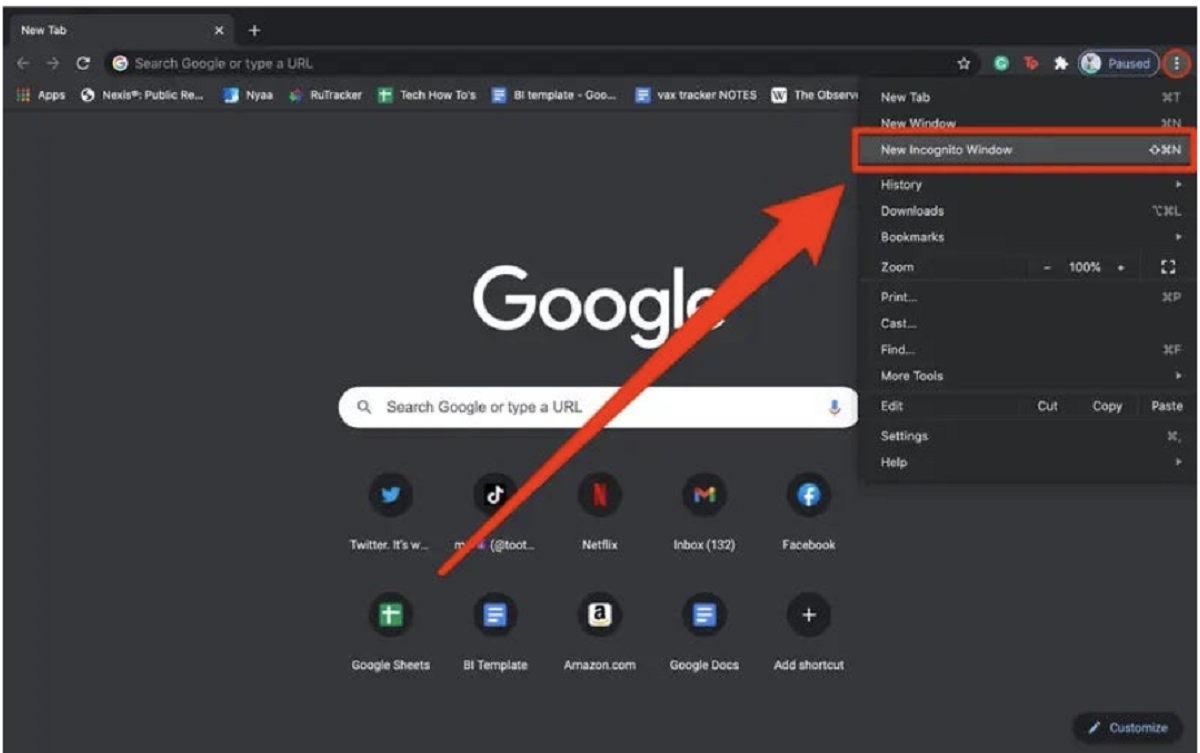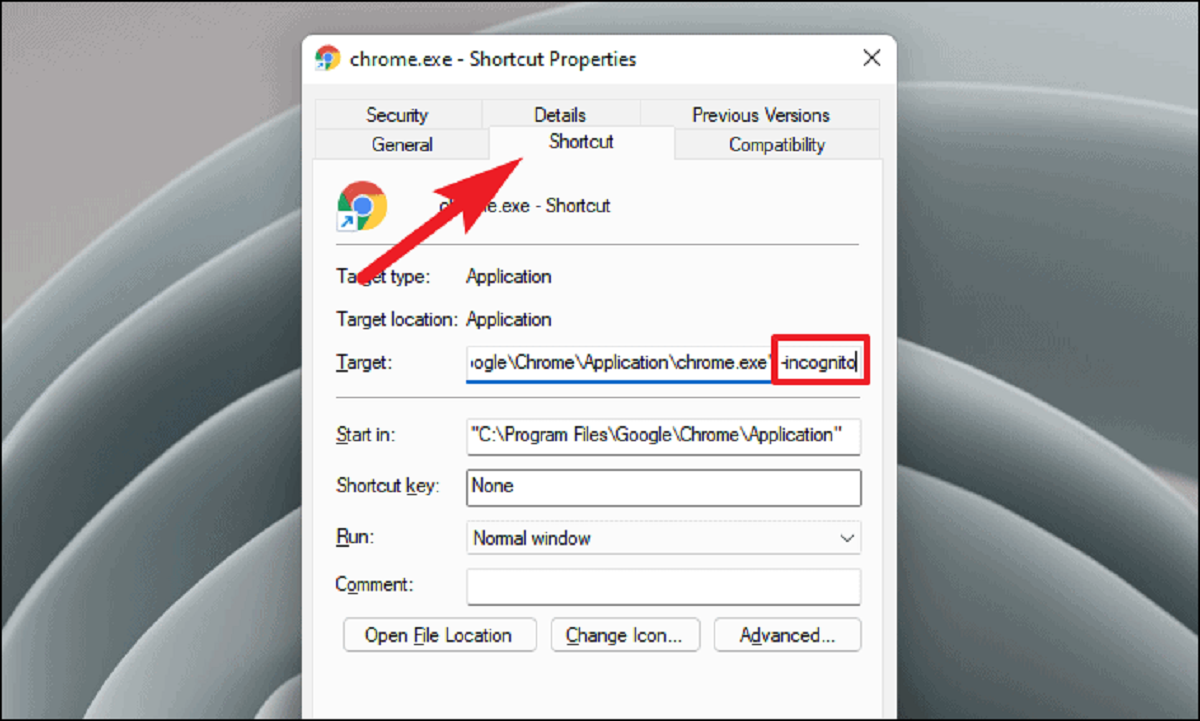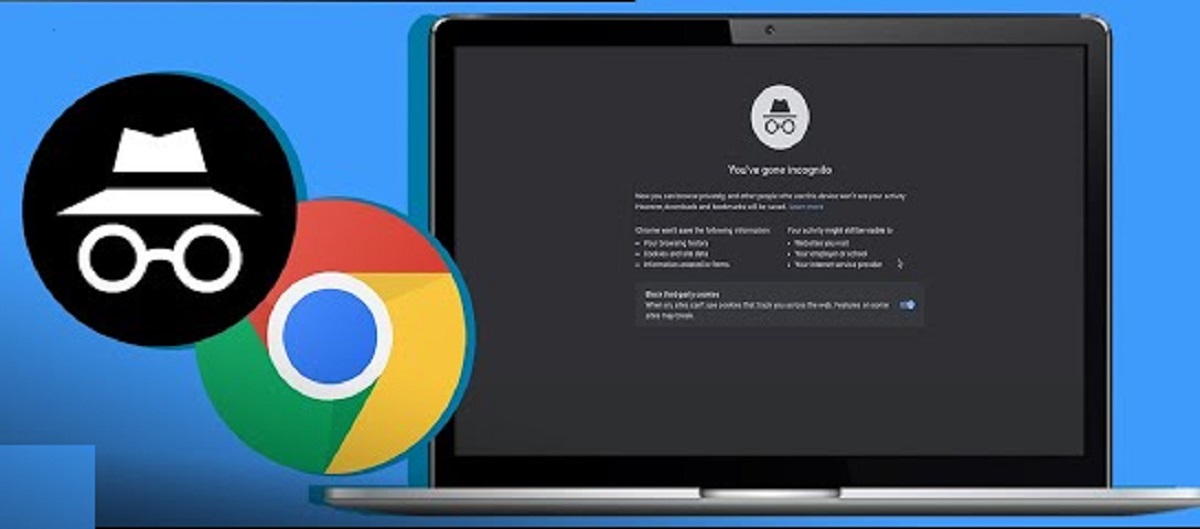Introduction
In today’s digital age, online privacy has become a pressing concern for individuals across the globe. With the constant tracking of user activity and the collection of personal data by various websites and advertising networks, many internet users are seeking ways to maintain their privacy while browsing the web. One popular solution to this problem is the use of “Incognito Mode,” a feature offered by most internet browsers.
Incognito Mode, also known as private browsing or privacy mode, is designed to provide users with a more secure and anonymous browsing experience. When enabled, it prevents the browser from storing information such as browsing history, cookies, and temporary files. While this mode can offer a layer of privacy, it’s important to understand its limitations and be aware that it does not provide complete anonymity.
In this article, we will explore what Incognito Mode is, how it works, and why you might want to use it for browsing history. We will also discuss how to enable Incognito Mode in different browsers, whether websites can still track your activity while in Incognito Mode, the evidence that can remain even after browsing in this mode, and how to clear your Incognito Mode history. Lastly, we’ll cover the risks and limitations that come with relying solely on Incognito Mode for online privacy.
What is Incognito Mode?
Incognito Mode, also known as private browsing or privacy mode, is a feature offered by most popular internet browsers, including Chrome, Firefox, Safari, and Edge. This mode allows users to browse the web without leaving a trace of their online activity on their device.
When enabled, Incognito Mode creates a separate browsing session that works independently from the regular browsing mode. It ensures that browsing history, cookies, and temporary files are not stored on the device, providing a certain level of privacy and anonymity. This means that any websites visited, searches made, and forms filled out will not be stored in the browser’s history or cookies.
Incognito Mode also prevents the browser from saving any downloaded files or adding bookmarks to the regular bookmark list. This can be useful when you’re trying to keep certain online activities private or if you’re using a public computer and don’t want to leave any traces.
It’s important to note that while Incognito Mode can prevent your browsing history from being stored on your device, it does not make you completely anonymous online. While using this mode, your internet service provider (ISP), employer, or the websites you visit can still track your online activity.
Additionally, Incognito Mode does not provide protection against hackers, malware, or phishing attempts. It simply ensures that your browsing activity is not recorded on your device, offering a level of privacy from other users who may have access to your device. If you want comprehensive online privacy and security, it’s recommended to use additional tools like a virtual private network (VPN) and robust antivirus software.
How Does Incognito Mode Work?
Incognito Mode works by creating a separate browsing session within your internet browser. When the mode is enabled, the browser doesn’t save certain information that is typically stored during a regular browsing session. Here’s a breakdown of how Incognito Mode works:
1. Cookies and Cache: When you browse the internet, websites often use cookies to store information about your activity. This can include login credentials, preferences, and tracking data. In Incognito Mode, these cookies are not stored, ensuring that your browsing activity remains private. Additionally, the browser also does not store temporary files or cache data. This means that once you close the Incognito Mode window, all browsing information is deleted.
2. Browsing History: One of the primary features of Incognito Mode is that it does not save your browsing history. This means that the websites you visit will not be recorded in the browser’s history list. It’s important to note that while the browsing history is not saved locally on your device, your internet service provider (ISP) may still have access to this information.
3. Session and Sign-In Data: Incognito Mode does not save any session data or sign-in information. This means that if you log in to a website or enter any personal data while in Incognito Mode, that information is not stored. It offers an added layer of security when accessing accounts on public computers or shared devices.
4. Extensions and Plugins: Incognito Mode disables browser extensions and plugins by default. This is done to ensure that any tracking or data collection performed by these extensions is not active while in Incognito Mode. However, it’s important to note that some extensions may still work in Incognito Mode if specifically configured to do so.
It’s crucial to understand that while Incognito Mode prevents the browser from storing certain information, it does not make you completely anonymous online. Websites you visit, internet service providers, and network administrators can still track your activity. Additionally, any data you enter on websites, such as filling out forms or making purchases, can still be saved by the website itself.
Furthermore, it’s worth mentioning that while the browser does not save your browsing information, your activity can still be monitored and tracked by external entities, such as government agencies and advanced tracking technologies. If you require a higher level of anonymity, you may need to consider additional tools like a virtual private network (VPN).
Why Use Incognito Mode for Browsing History?
There are several reasons why you might consider using Incognito Mode for your browsing history. Let’s explore some of the key benefits:
1. Private Browsing: Incognito Mode provides a level of privacy that regular browsing does not offer. By not storing your browsing history, cookies, or cache data, it helps prevent others who have access to your device from seeing which websites you have visited. This can be particularly useful if you’re using a shared computer or if you simply prefer to keep your browsing activity private.
2. Avoiding Targeted Ads: When you visit websites in regular browsing mode, they often use cookies to track your online behavior and display targeted advertisements. However, in Incognito Mode, these cookies are not stored, which means that websites are less likely to track your preferences and show you personalized ads. This can be beneficial if you want to minimize targeted advertising or if you’re conducting research and want to avoid biased search results.
3. Testing Website Changes: If you’re a web developer or designer, Incognito Mode can be a handy tool for testing changes to a website. By opening the website in Incognito Mode, you can browse as if you were a new visitor without any existing cookies or cached data. This allows you to see how the website behaves for first-time users and ensures that your changes are reflected accurately.
4. Signing in to Multiple Accounts: Incognito Mode can be convenient for signing in to multiple accounts on the same website. Since it does not store your session data, you can simultaneously log in to the same website with different account credentials. This is especially helpful for managing multiple email accounts or social media profiles without the need to constantly log out and log back in.
5. Protecting Sensitive Information: When you browse in Incognito Mode, the browser does not save any form data, including passwords, credit card numbers, or personal information. This can help safeguard your sensitive data from being stored on your device, reducing the risk of it being accessed by others through your device’s saved data.
While Incognito Mode offers these benefits, it’s important to note that it is not a foolproof solution for online privacy. It does not make you completely anonymous and does not protect against tracking by websites, internet service providers, or government agencies. For enhanced privacy and security, consider combining Incognito Mode with additional privacy tools like VPNs and security-focused browser extensions.
How to Enable Incognito Mode on Different Browsers
Enabling Incognito Mode may vary slightly depending on the internet browser you are using. Here are the steps to enable Incognito Mode on some popular browsers:
1. Google Chrome: To enable Incognito Mode in Google Chrome, click on the three-dot menu icon in the top-right corner of the browser window. From the dropdown menu, select “New incognito window” or press the keyboard shortcut Ctrl+Shift+N. A new window will open in Incognito Mode.
2. Mozilla Firefox: In Mozilla Firefox, click on the three-line menu icon in the top-right corner and select “New Private Window” from the dropdown menu. Alternatively, you can use the keyboard shortcut Ctrl+Shift+P to open a new private window in Incognito Mode.
3. Safari: To activate Incognito Mode in Safari on a Mac, click on “File” in the menu bar and choose “New Private Window.” You can also use the keyboard shortcut Shift+Command+N to open a new private window. On Safari for iOS devices, tap on the tab switcher button at the bottom of the screen and choose “Private” to enter Incognito Mode.
4. Microsoft Edge: In Microsoft Edge, click on the three-dot menu icon in the top-right corner and select “New InPrivate Window” from the menu. Alternatively, use the keyboard shortcut Ctrl+Shift+P to open a new InPrivate Window in Incognito Mode.
5. Opera: To enable Incognito Mode in Opera, click on the Opera logo in the top-left corner and select “New private window” from the menu. You can also use the keyboard shortcut Ctrl+Shift+N to open a new private window.
6. Brave: In the Brave browser, simply click on the “Hamburger” menu icon in the top-right corner and select “New Private Window.” You can also use the keyboard shortcut Ctrl+Shift+N to open a new private window.
These are the general steps to enable Incognito Mode on different browsers. However, it’s important to note that the menus and options may vary slightly between different versions of the browsers.
Once you have opened a new window or tab in Incognito Mode, you can start browsing privately without the browser saving your history, cookies, or other browsing data. Remember that while your local browsing activity is not saved, your internet service provider and the websites you visit may still be able to track your online activity.
Can Websites Still Track Your Activity in Incognito Mode?
While Incognito Mode offers a certain level of privacy by not storing your browsing history, cookies, and other data on your device, it does not make you completely anonymous online. Websites and online services can still track your activity even when you are browsing in Incognito Mode. Here are some factors to consider:
1. Internet Service Providers (ISPs): Your internet service provider can still see your browsing activity, regardless of whether you are using regular browsing mode or Incognito Mode. ISPs can monitor your internet traffic and track the websites you visit, the duration of your visits, and the data you transmit and receive. Incognito Mode does not hide your internet activity from your ISP.
2. Websites with Tracking Technologies: Many websites use various tracking technologies, such as cookies, web beacons, and other tracking scripts, to collect data about users. Even in Incognito Mode, these websites can still track your activity and collect information such as your IP address, browser type, device information, and interactions with their site. This data is often used for analytics, advertising, and personalization purposes.
3. Third-party Services and Social Media: Websites often include embedded content, such as social media buttons or third-party services, which can also track your activity. This means that even if you are in Incognito Mode, these embedded elements can still gather information about your interaction with the website or social media platform.
4. Network Administrators: If you are browsing on a network, such as at work or in a public Wi-Fi hotspot, the network administrator may still have access to your browsing activity. They can monitor network traffic and view the websites you visit, even in Incognito Mode. It’s important to exercise caution and be aware of the network policies and permissions when using public networks.
While Incognito Mode may prevent your local browser from storing your browsing activity, it does not provide complete privacy from the websites you visit or other entities tracking your activity. To enhance your online privacy, consider using additional privacy tools such as virtual private networks (VPNs), browser extensions that block tracking scripts, and regularly clearing your browsing data.
It’s also worth noting that while Incognito Mode can provide some level of privacy from others who may have access to your device, it does not protect against hackers, malware, or phishing attempts. It’s essential to maintain other security measures such as using reputable antivirus software, keeping your operating system and browsers up to date, and being cautious of suspicious websites and email attachments.
Evidences That Remain Even in Incognito Mode
While browsing in Incognito Mode can prevent your local browser from storing certain data, it’s important to be aware that it does not provide complete anonymity or erase all traces of your online activities. Here are some evidences that can remain even when you are browsing in Incognito Mode:
1. Network Logs: When you connect to the internet, your internet service provider (ISP) logs your network activity. This includes the websites you visit, even when in Incognito Mode. While your local browser may not store this information, your ISP can still access and monitor the websites you visit, the duration of your visits, and other metadata related to your network activity.
2. Website Tracking: While Incognito Mode can prevent your browser from storing cookies and other tracking data, websites can still track your activity through other means. This includes tracking pixels, fingerprinting techniques, and server logs. These methods allow websites to identify and track your browsing behavior, even if you are using Incognito Mode.
3. DNS Requests: When your browser requests a connection to a website, it sends a DNS (Domain Name System) request to translate the domain name into an IP address. These DNS requests are typically logged by your ISP or by the DNS resolver you are using. This means that even if your browser doesn’t save your browsing history, your DNS requests can provide evidence of the websites you have visited while in Incognito Mode.
4. External Services and Plugins: While browsing in Incognito Mode, websites may still use external services or plugins that can track your activity. For example, social media plugins or embedded content from third-party websites can gather your browsing data, even if your local browser doesn’t store it. These external services can track your interactions and collect information for analytics or targeted advertising purposes.
5. Local Network Monitoring: In certain environments, such as workplaces, educational institutions, or public Wi-Fi networks, the network administrators may have tools in place to monitor network traffic. This allows them to see the websites you visit, regardless of whether you are using Incognito Mode. It’s important to be aware of the network policies and permissions in such environments.
It’s crucial to understand that while Incognito Mode can enhance privacy by preventing your local browser from storing some data, it does not provide complete anonymity or ensure that your online activities are completely hidden. If you require a higher level of privacy, consider using additional tools such as virtual private networks (VPNs) to encrypt your traffic and further protect your online identity.
Keep in mind that while Incognito Mode can be a useful tool for private browsing, it’s important to practice safe browsing habits, use strong and unique passwords, and stay vigilant against phishing attempts or malicious websites, regardless of the mode you are using.
Clearing Incognito Mode History
While browsing in Incognito Mode prevents your browser from storing your browsing history, there may be instances where you want to clear the history of your Incognito sessions. Here’s how you can clear the Incognito Mode history on different browsers:
1. Google Chrome: To clear the history of your Incognito sessions in Google Chrome, click on the three-dot menu icon in the top-right corner of the browser window. From the dropdown menu, go to “History” and then select “History” again. In the history page, click on “Clear browsing data” on the left-hand side. In the popup that appears, ensure that “Browsing history” is selected and choose the desired time range. Finally, click on the “Clear data” button to clear the history of your Incognito sessions.
2. Mozilla Firefox: In Mozilla Firefox, click on the three-line menu icon in the top-right corner and select “Library” or “History” from the dropdown menu. In the library or history menu, click on “History” and then go to “Clear Recent History.” In the popup window, select the desired time range and make sure that “Browsing & Download History” is checked. Click on the “Clear Now” button to clear the history of your Incognito sessions.
3. Safari: On Safari for Mac, click on “History” in the menu bar and select “Clear History.” In the popup that appears, choose the time range and click on the “Clear History” button to clear the history of your Incognito sessions. On Safari for iOS devices, go to the Settings app, scroll down and tap on Safari, and then tap on “Clear History and Website Data.” Confirm the action by tapping on “Clear History and Data” to clear the Incognito Mode history.
4. Microsoft Edge: In Microsoft Edge, click on the three-dot menu icon in the top-right corner and go to “Settings.” In the settings panel, click on “Privacy, search, and services” in the left-hand menu. Scroll down to the “Clear browsing data” section and click on “Choose what to clear.” Ensure that “Browsing history” is selected and click on the “Clear” button to clear the history of your Incognito sessions.
5. Opera: In Opera, click on the Opera logo in the top-left corner and go to “Clear browsing data” from the dropdown menu. In the popup window, select the desired time range and check the box next to “Browsing history.” Click on the “Clear browsing data” button to clear the history of your Incognito sessions.
By following these steps, you can effectively clear the history of your Incognito Mode sessions in different browsers. Keep in mind that clearing the Incognito Mode history will not remove any traces of your browsing activity from your internet service provider or other external entities that might have been tracking your online activity. For enhancing privacy and removing a wider range of data, consider using privacy-focused browser extensions and regularly clearing your browsing data, including cookies and cache.
Risks and Limitations of Incognito Mode
While Incognito Mode can provide a certain level of privacy and help maintain anonymity while browsing the web, it’s important to understand its limitations and be aware of the potential risks involved. Here are some key risks and limitations of using Incognito Mode:
1. Limited Local Privacy: Incognito Mode only prevents your local browser from storing certain data, such as browsing history, cookies, and temporary files. However, it does not make you completely anonymous online. Your internet service provider (ISP), network administrators, and the websites you visit can still track your online activity. Additionally, any data you enter on websites, such as filling out forms or making purchases, can still be saved by the website itself.
2. External Tracking: While Incognito Mode may prevent your browser from storing certain data, websites can still track your activity through other means, such as tracking pixels, fingerprinting techniques, and server logs. External services and plugins embedded on websites may also gather data about your interactions, even if your local browser doesn’t store it. This means that your browsing activity can still be monitored and tracked by various entities on the internet.
3. Incomplete Anonymity: Incognito Mode does not provide complete anonymity. It does not hide your IP address, which can still be tracked by websites and internet service providers. Furthermore, your ISP can still monitor your internet traffic and record the websites you visit, regardless of whether you are in Incognito Mode or not. To achieve higher levels of anonymity, additional privacy tools like virtual private networks (VPNs) are recommended.
4. Lack of Protection Against Malware and Phishing: Incognito Mode does not protect you from malware or phishing attempts. While it may prevent downloaded files from being saved to your device, it does not provide any additional security against malicious websites or files. It’s essential to use robust antivirus software, keep your operating system and browsers up to date, and exercise caution when browsing the internet, regardless of whether you are in Incognito Mode or not.
5. Device and Network Vulnerabilities: Incognito Mode does not protect your device or network from vulnerabilities. It does not encrypt your internet traffic, which means that any data transmitted between your device and websites can potentially be intercepted by malicious actors. To enhance overall security and protect your data, especially when using public Wi-Fi networks, it’s advisable to use a VPN and ensure that your device’s security settings are up to date.
It’s important to understand the risks and limitations of Incognito Mode before relying on it solely for online privacy. While it can offer a level of privacy by not storing certain data on your local device, it does not provide complete anonymity or protect against tracking from external entities. To enhance your privacy and security, consider using additional privacy tools and following best practices for safe and responsible browsing.
Conclusion
Incognito Mode, also known as private browsing, offers a level of privacy and anonymity while browsing the web. It prevents your browser from storing your browsing history, cookies, and temporary files, providing a more secure and private online experience. However, it’s important to understand the limitations and risks associated with Incognito Mode.
While Incognito Mode can help keep your browsing activity private from others who have access to your device, it does not make you completely anonymous. Your internet service provider (ISP), network administrators, and the websites you visit can still track your online activity. Incognito Mode also does not protect against malware, phishing attempts, or advanced tracking techniques used by websites and advertisers.
It’s crucial to use additional privacy tools, such as virtual private networks (VPNs), to enhance your online anonymity and security. VPNs encrypt your internet traffic, making it difficult for third parties to track your online activities. Additionally, it’s important to follow safe browsing practices and maintain up-to-date security measures on your device.
Despite its limitations, Incognito Mode can still be useful in certain situations. It can help maintain privacy while browsing on shared devices, enable testing of website changes, and allow for signing in to multiple accounts simultaneously. Incognito Mode can also offer some protection against locally stored browsing data being accessed by others who may have access to your device.
In conclusion, while Incognito Mode provides a level of privacy by not storing certain data on your local device, it is not a foolproof solution for online privacy. It’s important to be aware of its limitations and take additional measures to enhance your online security and anonymity. By combining Incognito Mode with other privacy tools and following safe browsing practices, you can better protect your online privacy and mitigate potential risks.









